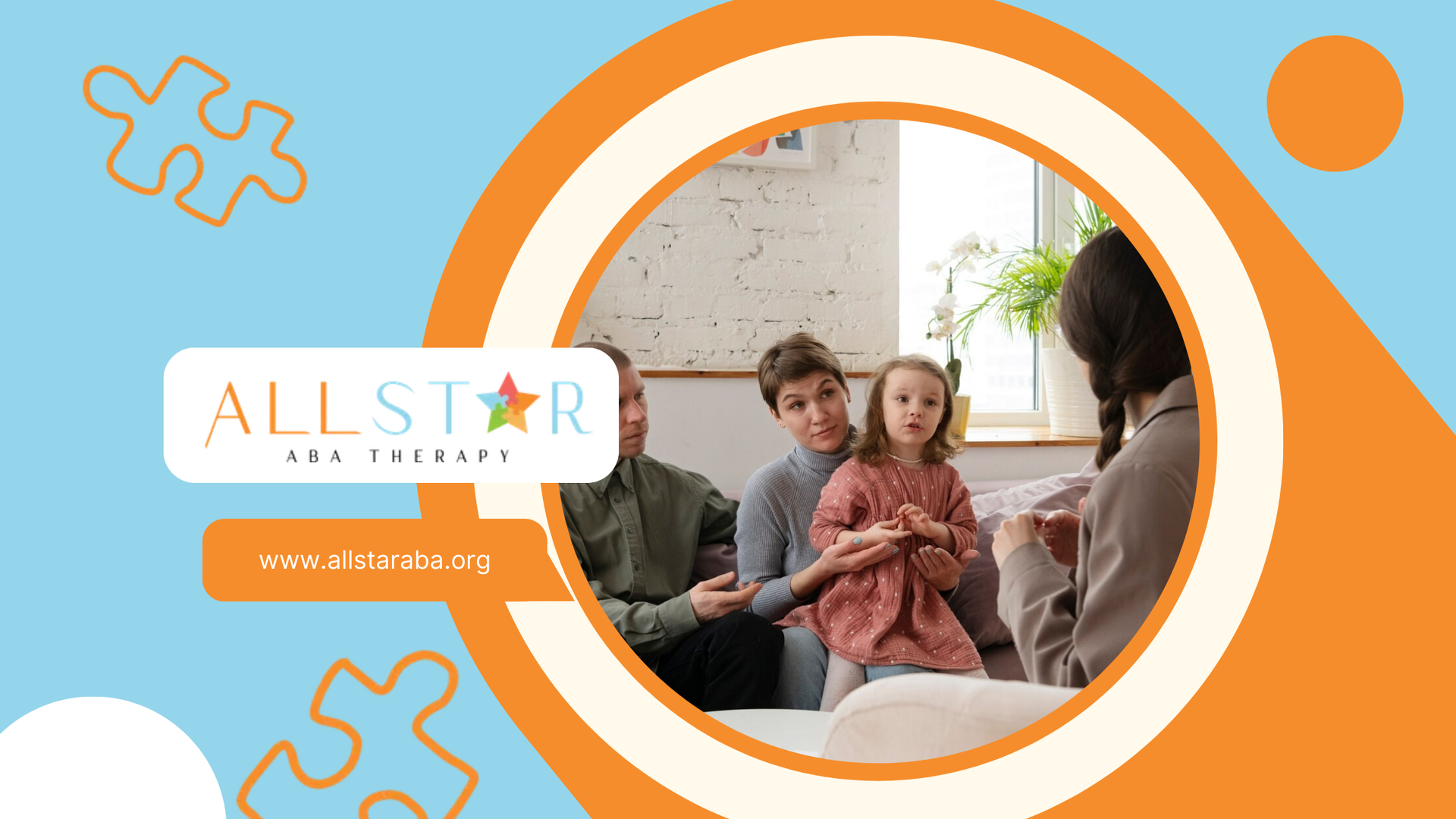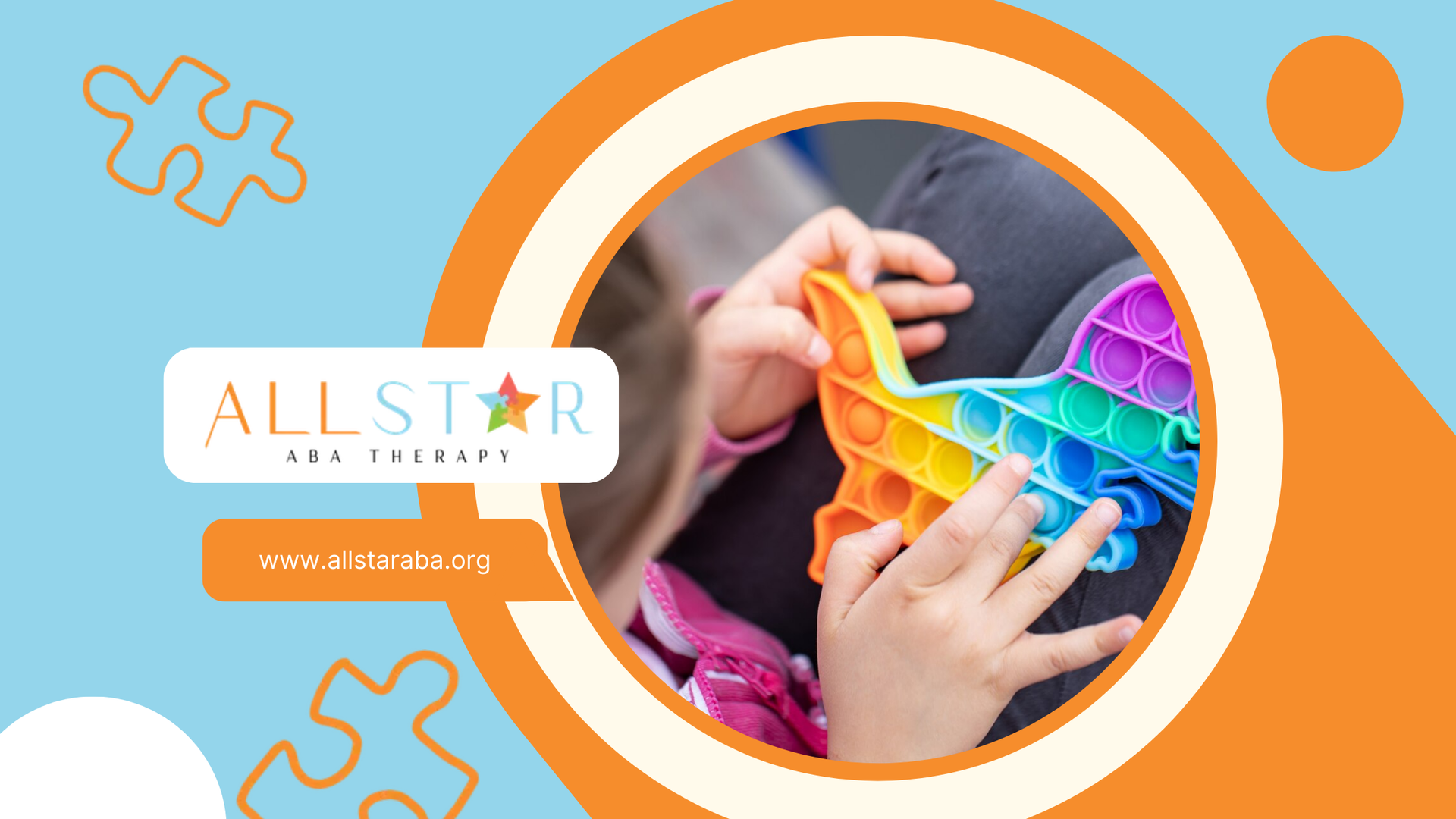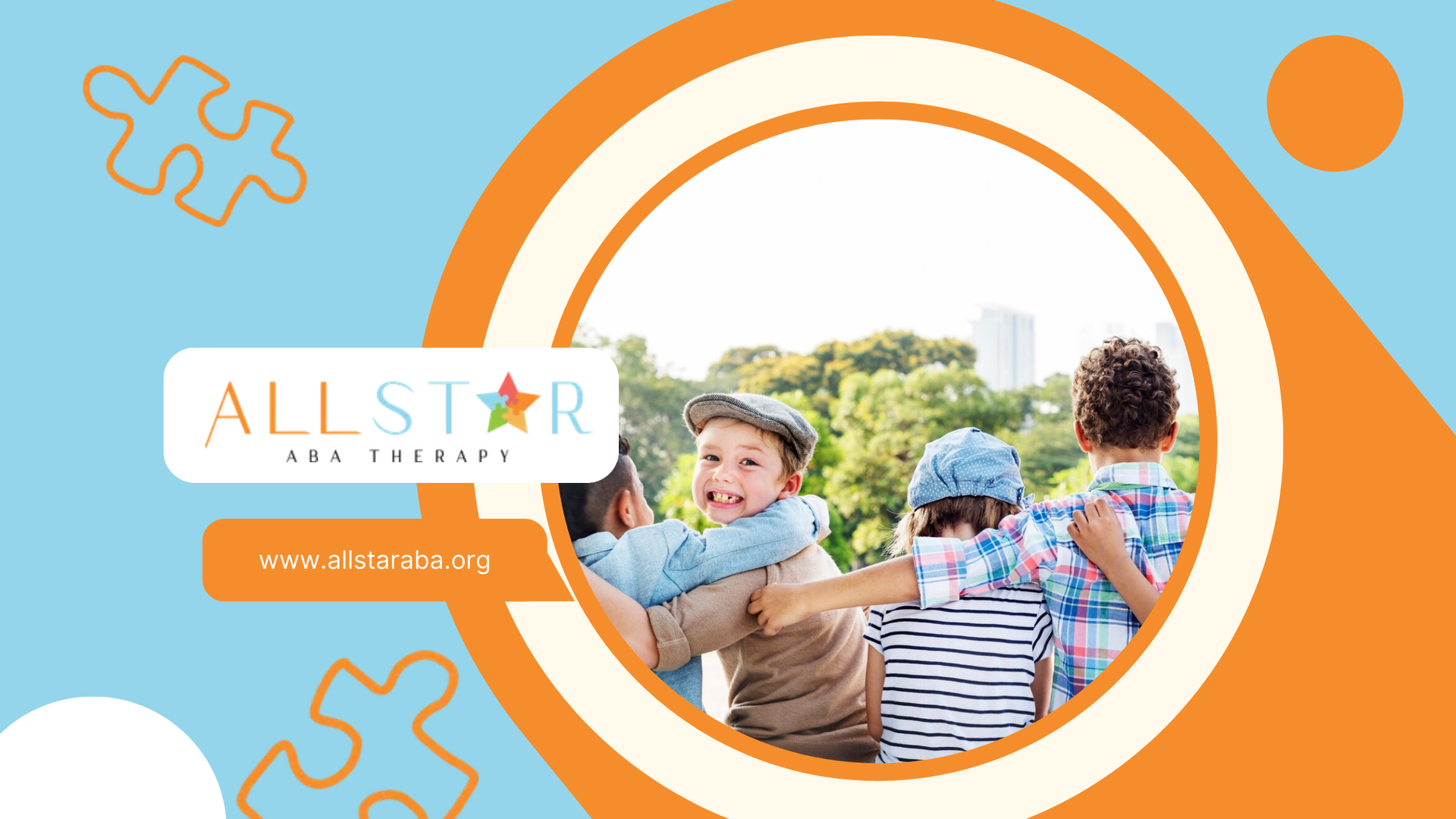New Paragraph
A Guide to Individualized Education Program for Autism
Navigating the world of individualized education programs (IEPs) can seem daunting for parents of children with autism spectrum disorder. This comprehensive guide aims to demystify the IEP process, providing valuable information and practical strategies to empower parents in supporting their child's educational journey. From understanding the purpose of an IEP to advocating for your child's unique needs, this guide will serve as a valuable resource to help your child reach their full potential.
Understanding Individualized Education Programs for Autism
In the realm of special education, individualized education programs (IEPs) serve as invaluable tools in providing customized support for students with autism. Recognizing that traditional educational approaches may not fully address the unique challenges faced by these students, IEPs offer a framework to provide tailored interventions and accommodations. Essentially, an IEP is a legally binding document that outlines the specific educational path for a student with a disability.
It is crucial to remember that an IEP is not a "one-size-fits-all" solution. Each IEP is meticulously crafted through a collaborative effort involving parents, educators, therapists, and other relevant professionals. This collaborative approach ensures that the IEP accurately reflects the student’s individual needs, strengths, and goals.
The Purpose and Importance of IEPs in Autism Education
Individualized Education Programs (IEPs) hold immense significance within the framework of autism education. These programs are not merely documents; they are roadmaps to unlocking a child's full potential by addressing their unique learning and developmental needs.
The foundation of IEPs lies in the Disabilities Education Act (IDEA), a federal law ensuring that all students with disabilities receive a free and appropriate public education (FAPE). IEPs serve as the mechanism for delivering on this promise. They ensure that children with autism have access to the special education services and support they require to thrive in an educational setting.
By setting clear, measurable goals and outlining specific strategies, IEPs empower educators to tailor their instruction to meet each student's unique learning style. Moreover, IEPs provide a formalized platform for ongoing communication and collaboration among parents, teachers, and therapists, ensuring that everyone involved in the child's education is working together towards shared goals.
Key Components of an Effective IEP for Autistic Children
An effective IEP for a child with autism is characterized by several key components that work together to create a comprehensive and supportive educational plan.
Firstly, it involves a collaborative approach, bringing together an IEP team comprising parents, teachers, special education services providers, and other relevant professionals. This team works together to assess the child's present levels of performance, identifying their strengths, challenges, and any support needs.
Based on this assessment, the IEP outlines measurable goals that are specifically tailored to the child's needs. These goals are not arbitrary; they are carefully crafted to be specific, measurable, achievable, relevant, and time-bound (SMART).
Finally, the IEP delineates the specific services and supports that will be provided to help the child achieve their goals. These may include specialized instruction, assistive technology, therapy services, or modifications to the learning environment.
Who determines eligibility for an IEP?
Determining a child's eligibility for an IEP is a multi-faceted process governed by specific criteria and procedures.
Initially, concerns about a child's development or academic progress, often raised by parents or educators, trigger an evaluation process. This process, conducted by the school district, involves a comprehensive assessment of the child's needs.
A team of professionals, including the child's teacher, specialists, and administrators, collaborate to gather information through various means. These may include observations, standardized tests, reviews of academic records, and consultations with parents. The compiled information is then carefully analyzed to determine if the child meets the criteria for a disability classification under the Individuals with Disabilities Education Act (IDEA).
If the child is deemed eligible, the team develops an IEP, a legal document, to address their specific educational needs. It's important to note that parents have the right to request an evaluation at any time and to be active participants throughout the entire IEP process.
Step-by-Step Guide to Creating an IEP for Autism
Creating an IEP for a child with autism is a collaborative and multi-step process.
It begins with a comprehensive assessment of the child’s unique needs, followed by setting specific and measurable goals to guide their educational journey. Determining the appropriate services and support required to achieve these goals is another crucial step. Finally, implementing the IEP, monitoring progress, and making necessary adjustments along the way ensures its effectiveness.
Step 1: Assessing Your Child’s Needs and Strengths
The first and most crucial step in crafting an effective IEP is conducting a thorough assessment of your child’s unique needs and strengths. This involves gathering information from various sources to gain a holistic understanding of their abilities and challenges.
Start by observing your child in different environments, such as home, school, and social settings. Take note of their communication style, social interactions, sensory sensitivities, and any behaviors that may impact their learning. Schedule a meeting with your child’s strengths and challenges in detail.
Supplement these conversations with insights from therapists or specialists who have worked with your child, sharing their professional observations and assessments. The more comprehensive the information gathered during this evaluation process, the more effectively the IEP can be tailored to meet your child’s individual needs.
Step 2: Setting Measurable Educational Goals
Once a comprehensive understanding of your child's needs and strengths is established, the next step involves setting clear and measurable educational goals. These IEP goals will serve as guideposts, outlining the specific skills and knowledge your child is expected to acquire during the IEP period.
Goals should be specific, leaving no room for ambiguity, and measurable, allowing progress to be tracked objectively. Ensure that the goals are challenging yet attainable for your child, fostering a sense of accomplishment as they work towards them.
Furthermore, goals should be relevant to your child's individual needs and aligned with their long-term aspirations. Collaborate with the IEP team, including teachers, therapists, and specialists, to establish specific goals that encompass various developmental domains, such as communication, social skills, academics, and daily living skills.
Step 3: Determining Specific Services and Supports
After establishing measurable educational goals, the next step is to determine the specific services and supports necessary to help your child achieve those goals. This is where the IEP becomes truly individualized, addressing your child’s specific needs and learning style.
Consider the various related services that could be beneficial, such as speech therapy to improve communication skills, occupational therapy to develop fine motor and sensory processing skills, or counseling to address social and emotional needs.
Additionally, explore potential modifications to the learning environment, such as providing visual aids, preferential seating, or access to sensory tools. If your child requires assistive technology to access the curriculum or communicate effectively, ensure these are included in the IEP as well.
The IEP team will work together to determine the frequency, duration, and providers for each service, ensuring that your child receives the necessary adjustments to reach their full potential.
Step 4: Implementing the IEP and Monitoring Progress
With the IEP finalized, the next crucial phase is implementation, bringing the plan to life within the educational setting. Successful implementation requires open communication among all stakeholders, including parents, teachers, therapists, and administrators.
Regular IEP meetings, as mandated by law, provide a structured platform for the team to discuss your child’s progress, address concerns, and make necessary adjustments. However, open communication shouldn't be limited to these formal meetings.
Encourage ongoing dialogue between home and school, fostering a collaborative partnership where teachers can readily share observations and parents can provide insights into their child’s experiences. Monitor your child’s progress towards their goals, celebrating their successes and identifying any areas where additional support may be needed.
Remember, the IEP is a living document, and regular review and revision are crucial to ensuring effective progress and maximizing your child’s educational experience. Request progress reports from the school to track how your child is performing against the goals outlined in the IEP.
Tailoring IEPs to Meet Diverse Needs
It is essential to recognize that autism exists on a spectrum, and each child presents with a unique set of strengths, challenges, and support needs.
Therefore, IEPs must be meticulously tailored to address these diverse needs, ensuring that the educational experience is truly individualized. This involves considering the child's communication style, social skills, sensory sensitivities, and any co-occurring conditions that may impact their learning. A flexible and responsive approach is key, allowing for adjustments to be made as the child grows and their needs evolve.
Incorporating Social Skills and Behavioral Support
For many children with autism, navigating the complexities of social interaction can present significant challenges.
Therefore, incorporating social skills training into the IEP is often crucial to support their development in this area. This might involve individual or group therapy sessions facilitated by a qualified professional, such as a speech-language pathologist or social worker. These sessions aim to equip children with the skills to initiate and maintain conversations, understand nonverbal cues, and develop appropriate social responses.
If a child exhibits disruptive behaviors that interfere with their learning or the learning of others, a Behavior Intervention Plan (BIP) may be necessary. The BIP, developed in collaboration with the IEP team, outlines strategies to address these behaviors and promote positive alternatives. This might involve identifying triggers for challenging behaviors, teaching replacement behaviors, implementing positive reinforcement systems, and establishing clear expectations for conduct.
The focus should always be on creating a supportive and inclusive classroom environment where the child feels safe, understood, and empowered to develop their social skills.
Adapting Learning Environments and Teaching Strategies
Creating a supportive educational environment for students with autism often requires adapting learning environments and teaching strategies to accommodate the unique needs of the child.
Recognizing that these students may be particularly sensitive to sensory stimuli, such as bright lights or loud noises, is crucial. Simple adjustments like providing noise-canceling headphones, creating designated quiet areas, or dimming the lights can make a world of difference in their ability to focus and learn. Visual supports, such as schedules, checklists, and social stories, can be powerful tools for enhancing communication and understanding for students with autism who are visual learners. Incorporating these supports into the learning environment can significantly reduce anxiety and promote independence.
Modifying teaching strategies to align with the student’s learning strengths is equally important. For instance, breaking down complex tasks into smaller, more manageable steps can make learning less overwhelming. Providing opportunities for movement breaks or incorporating sensory activities into lessons can help students stay regulated and engaged.
Remember, the ultimate goal is to create a learning environment where the student feels safe, supported, and empowered to access the general curriculum and reach their full educational performance.
Overcoming Common Challenges in IEP Implementation
While IEPs are invaluable tools for supporting students with autism, their implementation is not without its challenges.
One common hurdle is ensuring consistent communication and collaboration among all team members, including parents, teachers, therapists, and administrators. Disparate schedules, varying communication styles, and differing perspectives can hinder effective teamwork. Another challenge can arise when resources are limited, making it difficult to provide all the services and supports outlined in the IEP.
Additionally, tracking and measuring progress toward goals can be complex, requiring a multifaceted approach that encompasses both quantitative and qualitative data.
Effective Communication with Educators and Therapists
Open and consistent communication between parents and the educational team is paramount to the success of any IEP. Establish clear lines of communication with your child’s teachers, therapists, and other team members from the outset.
Regularly scheduled meetings, both formal and informal, provide a dedicated space for sharing information, addressing concerns, and celebrating successes. Embrace a proactive approach to communication, reaching out to teachers and therapists with updates on your child’s progress at home or any changes in their behavior or routines.
Likewise, encourage educators to share their observations and insights from the classroom. Constructive feedback, both positive and negative, is crucial for making informed decisions about the IEP and ensuring it remains relevant to your child’s evolving needs.
Harness the power of technology by using email, messaging apps, or online platforms to facilitate communication and ensure everyone stays informed. Remember, collaboration and communication are the cornerstones of successful IEP implementation. Open communication leads to valuable insights about the child’s progress.
Adjusting IEP Goals and Services Over Time
It's crucial to remember that an IEP is not a static document; it's a fluid plan that should be reviewed and adjusted over time to reflect the child's growth and changing needs.
As your child progresses, their IEP goals may need to be modified to ensure they remain appropriately challenging yet attainable. What was once a significant milestone for your child may become a regular occurrence, prompting the need for new and more advanced goals.
Similarly, the types and levels of support required may need to be adjusted. A once essential service might become less so as your child develops new skills and independence. Conversely, new challenges might arise, necessitating the addition of new services or support to the IEP.
Regular IEP meetings, mandated at least annually, provide a formal opportunity to review and revise the plan. However, don't hesitate to request an IEP meeting at any point if you feel your child's needs are not being met or if you have concerns about their progress. Embrace these meetings as opportunities to collaborate with the IEP team, share your observations, and advocate for the necessary adjustments to ensure your child continues to thrive. Be specific in your requests and provide documentation, if possible, to support your suggestions.
Remember, an IEP is a living document, and making necessary revisions is crucial for optimal growth, ensuring that the plan remains tailored, effective, and responsive to your child’s evolving needs. It provides a framework for the measurable goals to remain relevant. It is an essential part of the IEP process, ensuring effective plans.
Conclusion
In conclusion, Individualized Education Programs (IEPs) play a crucial role in supporting children with autism by providing tailored educational plans. Understanding the significance of IEPs and actively participating in the process ensures that your child receives the necessary support to thrive academically and socially.
By following a structured approach to creating and implementing an IEP, you can address your child's unique needs effectively. Remember, collaboration with educators and therapists is key to the success of the IEP. Stay involved, monitor progress, and be open to adjustments as your child's requirements evolve. Building a strong support system around your child guarantees a holistic approach to their education and development.
All Star ABA is dedicated to providing comprehensive ABA therapy services, the best in Maryland, to help children with autism succeed in both educational and social settings. Our experienced therapists collaborate closely with schools and families to develop effective IEPs that address individual needs.
With a focus on early intervention and evidence-based practices, we empower children to overcome challenges and thrive. Contact All Star ABA today to learn more about our best ABA therapy services in Maryland and how we can support your child's journey.
Frequently Asked Questions
What if my child’s needs change after setting the IEP?
If your child’s needs change, you can request an IEP meeting to review and revise the IEP at any time. The IEP is a fluid document that can be adjusted to ensure your child continues to receive the necessary support to thrive. The IEP process allows parents to advocate. Parents or the school district can request a meeting. There are certain situations where an IEP meeting is required by state law. These situations might include the addition or significant change to the student's transition services (if the student is 16 years or older).
Need Support?
We're Here to Help!
Our experienced team is ready to assist you. Reach out today to discuss how we can support your child's development and well-being.
Get started with expert ABA therapy today.
Related posts

All Star ABA ©2024

All Star ABA delivers the gold standard of care, Applied Behavioral Analysis (ABA) therapy, for individuals diagnosed with ASD, from infancy to age 21.
Quick Links







